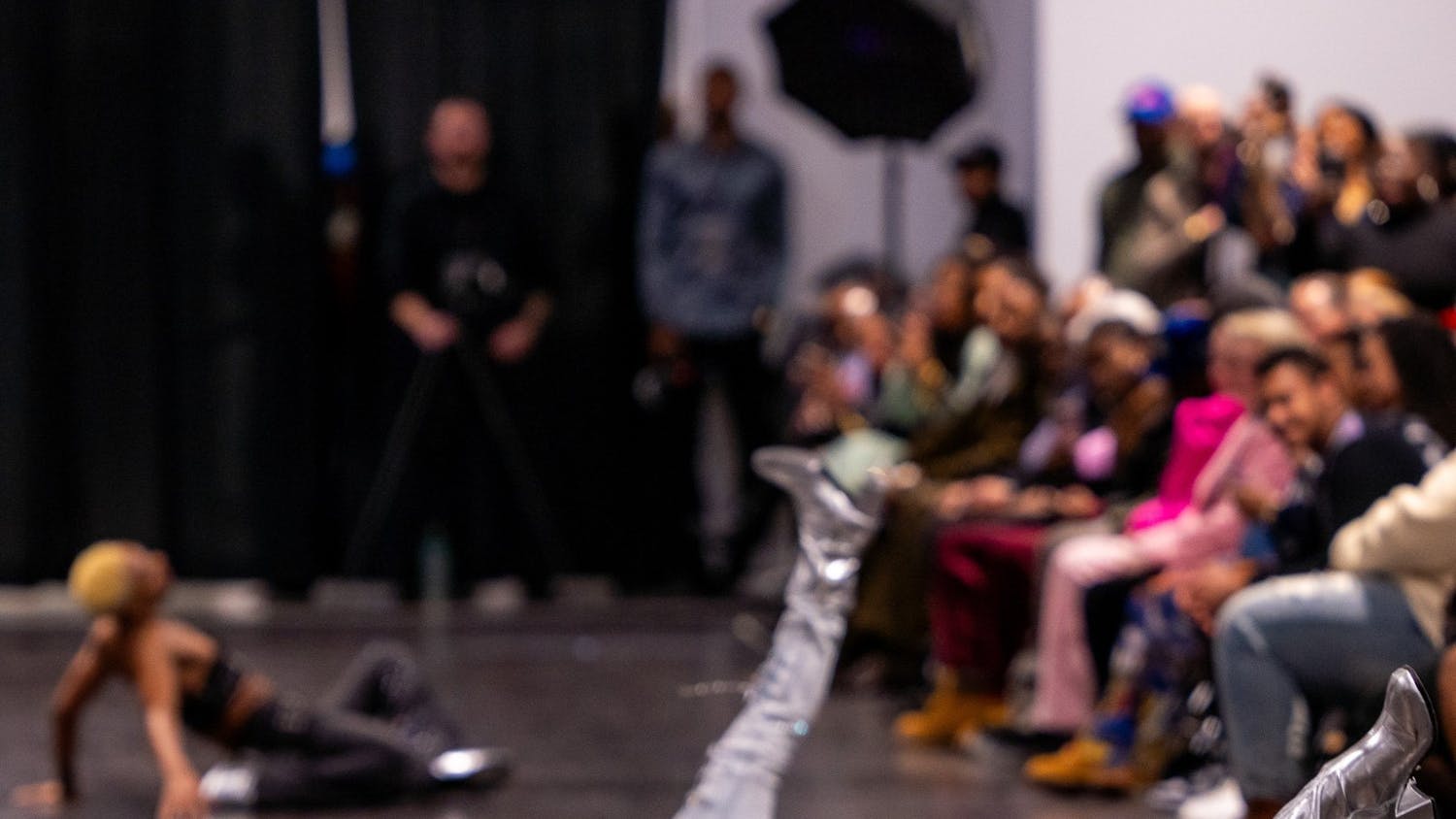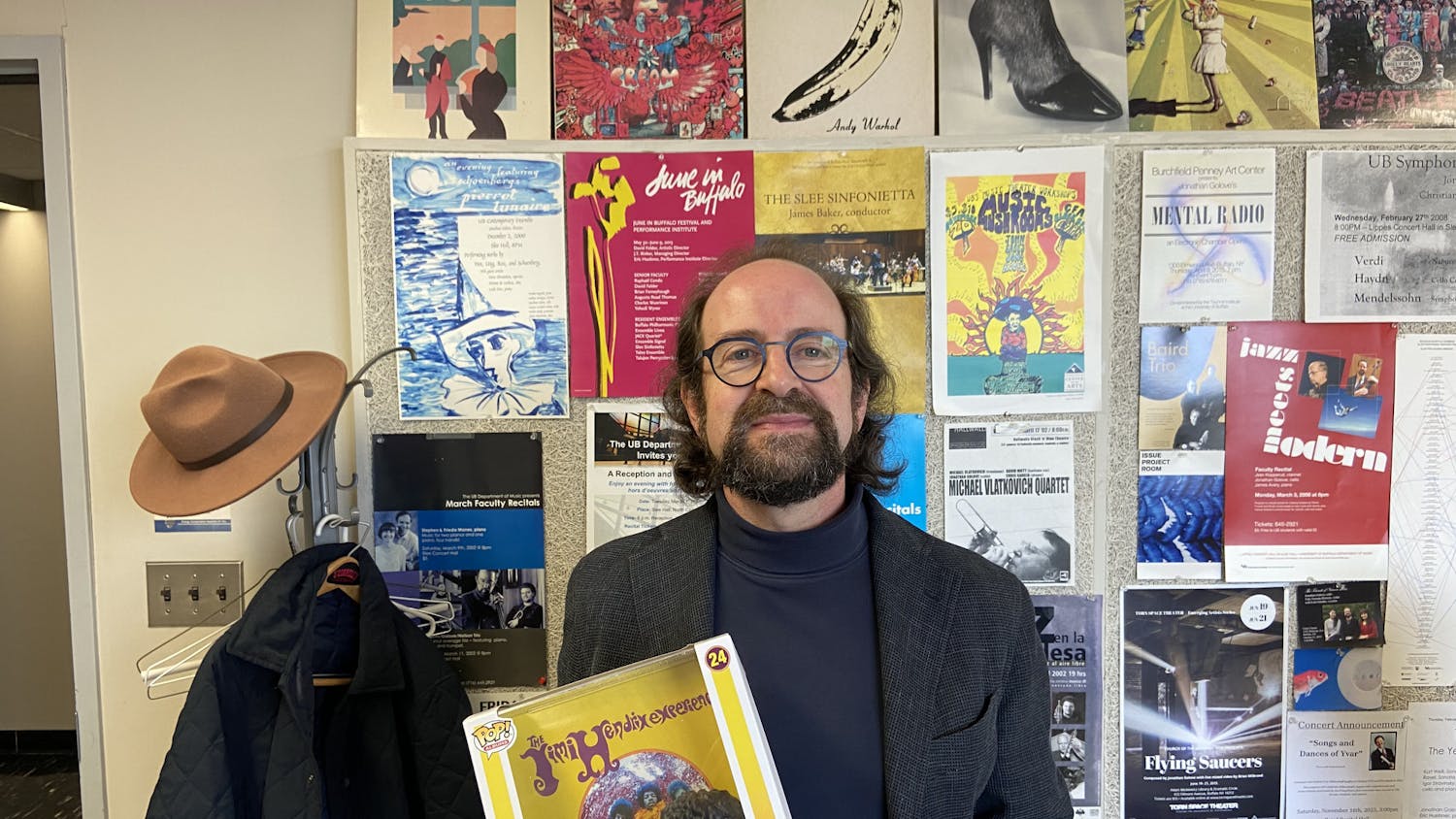As finals week comes into full swing on the campus, many students will be spending the majority of their time cramming in one of UB’s libraries preparing for exams.
The experiences of arts majors during finals week differ in many ways from that of their peers – for many they don’t have a final exam but a final performance or project instead.
Students in arts majors programs employ preparation techniques different than many students, mainly due to the nature of their examinations. Most of their finals examinations are performance-based – although some do involve memorization – but the physical and creative aspect of art is hard to quantify on just paper alone.
The finals of theater majors can range from final scene presentation, presentation of a monologue, scene work to a paper to a play breakdown, according to Jessica Tokarski, a junior theater performance major.
“For scenes, memorization, character work needs to be done, the paperwork side of acting, rehearsal with your partner,” Tokarski said. “As well as taking notes that had been previously given to you by the teacher and trying to focus on one or two sections to improve upon.”
Similarly, sitting down with a part of a scene that you will be rehearsing requires time dedicated solely to memorization.
Usually, arts majors are given about half of the semester to prepare for their finals. Theater students like Tokarski find unique ways to study for rehearsal exams.
“Monologues involve the same process [of memorization], but the rehearsal will obviously not include another participating actor,” Tokarski said. “I do a lot of characterization work, answering questions about my character: Who are they? What do they want? I'll also then go into more detail about what I am using as substitution or as a prep for my monologue so I have a mental game plan of where I want to get myself to emotionally in the monologue.”
As arts can be an extensive undertaking, students find it easier to look at their finals as final presentations, not as final products.
This type of preparation is similar to what dance majors will go through. Many times they will be given material to work off of or, in some cases, asked to create their project from scratch.
“We have either learned practical combinations where the teacher gives them to us and we have to learn them and perform them for a grade or we have to choreograph our own dances,” said Emma Millspaugh, a junior dance major. “For the learned ones it's just practicing what we're taught and going over it so we're ready when we perform them, for self-choreographed ones we put in time to think of a dance.”
Dance majors are graded on technical proficiency, strength, choreography and performance quality.
Visual arts majors are asked to utilize everything they’ve learned over their collegiate career when creating their final projects. This sometimes requires students to work on final projects for the entire semester.
“Some of our projects are graded on our improvement throughout the semester, but one project I've been working on all semester,” said Sierra Thurston, a senior graphic design major. “A lot of concepts go into it. I make collages out of magazine clippings, put them into a computer and alter them in the computer so I can make them more my own thing. It's something you work on using knowledge you've gained over your college career.”
The importance of concepts was something that was emphasized by Thurston’s colleague, Annive Farrand, a junior studio art major.
Farrand, who’s been working on her final project for the last four weeks, also said projects are expected to get more independent as you go through your collegiate career.
“Freshmen year is a lot of fundamentals, not getting into individual concepts, more getting into what we believe in,” Farrand said. “We each have our own style of work and teachers know that, so projects are more open ended. It's more concept-based, what we want to convey to our viewers.”
What is expected of arts students involves a higher degree of control of their bodies and creative selves. But among students of all majors, stress is a common, uniting factor.
Kenneth Kashif Thomas is an arts desk editor and can be reached at kenneth.thomas@ubspectrum.com. Follow him on Twitter at @KenUBSpec.





